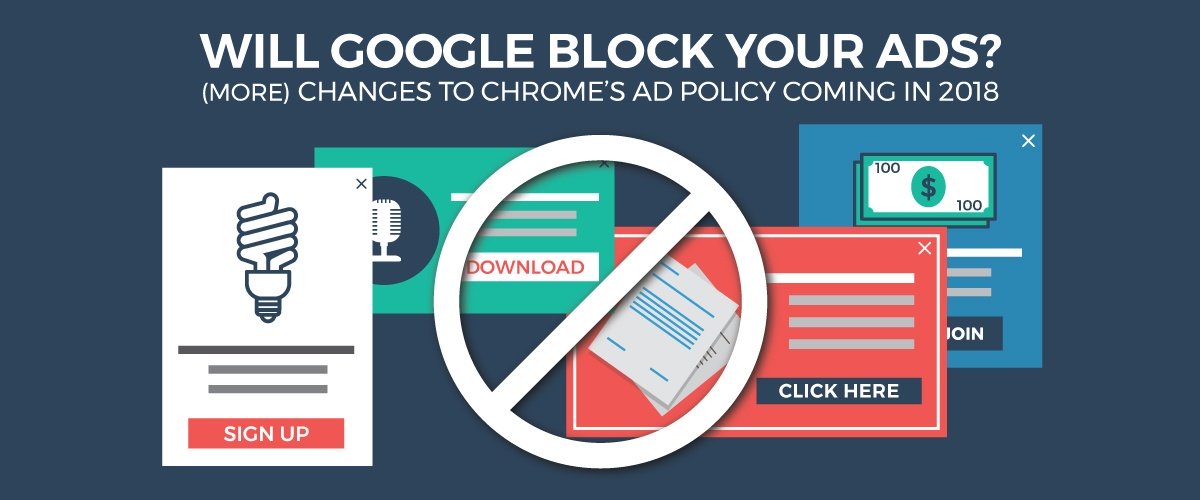Google constantly makes updates to its search algorithms, networks, and advertising policies. With all this change, it can be hard to keep your digital marketing campaigns optimized for the most popular search engine in the world. The next major change coming will affect what kinds of ads can be shown on Google’s chrome browser.

On February 15th, 2018, Chrome will block a range of ad types that many users find annoying. This change, which comes as a response to new guidelines from the Coalition for Better Ads (CBA), could potentially shut down millions of non-compliant ads.
Which Ads Will Be Blocked?
This new, Google ad blocker aims to eliminate only those ads that seriously disrupt a user’s experience of a website. If an ad bombards a user with distracting audio or visual, or if it squeezes out a site’s content, then it’s probably out. Across all desktop and mobile platforms, a total of four types of ads will be banned on Chrome. An additional four ad types of ads will be blocked on mobile alone. Here’s a rundown of which ads will be banned where.
Blocked on all Platforms:
- Pop-ups: Any ad that suddenly appears in front of a page, blocking a user from the page’s main content.
- Video ads with sound: Only those video ads that automatically play sound, without any user interaction.
- Large stickies: Large ads that stay “stuck” to a webpage even as users scrolls through it.
- Prestitial ads with countdowns: Ads that appear on a site before its content has loaded, preventing a visitor from engaging with the content for a certain period of time.
Blocked on Mobile only:
- All ads banned on desktops.
- All prestitial ads: Whether it has a countdown or not, any ad that appears on a site before its content is loaded will be blocked.
- All excessively large ads: If an ad covers over 30% of a mobile screen, it will be blocked.
- Poststitial ads with countdowns: Ads with countdown timers that appear after a user follows a link, forcing them to wait before they can dismiss the ad and/or be directed to another page.
- Flashing, animated ads: Any animated ad with rapidly changing colors or background.
You can find more information about each of these ad types at the CBA’s Website.
Are there More Changes Coming?
For now, only ads in the above categories will be blocked. But as the Coalition for Better Ads continues to develop its quality standards, it’s possible that Google will add further restrictions on what kinds of ads can appear on Chrome.
If your website runs other companies’ ads, you can find out how your site will be affected by the new rules using Google’s new tool, “The Ad Experience Report”. According to Google, “if your site presents violations,” the report “may identify the issues to fix.”
In truth, the most surefire way to guarantee that your ads meet all of Google’s standards is to use AdWords, Google’s own platform for advertising across its networks. Since Google spells out all the rules for ads displaying through AdWords, it’s possible to know whether your ad will show, before it’s blocked. Having a firm grasp on all those rules is essential to running an efficient, effective AdWords campaign. So if you’re unsure whether your AdWords ads are set up correctly, consider getting in touch with the team at Logical Position.




